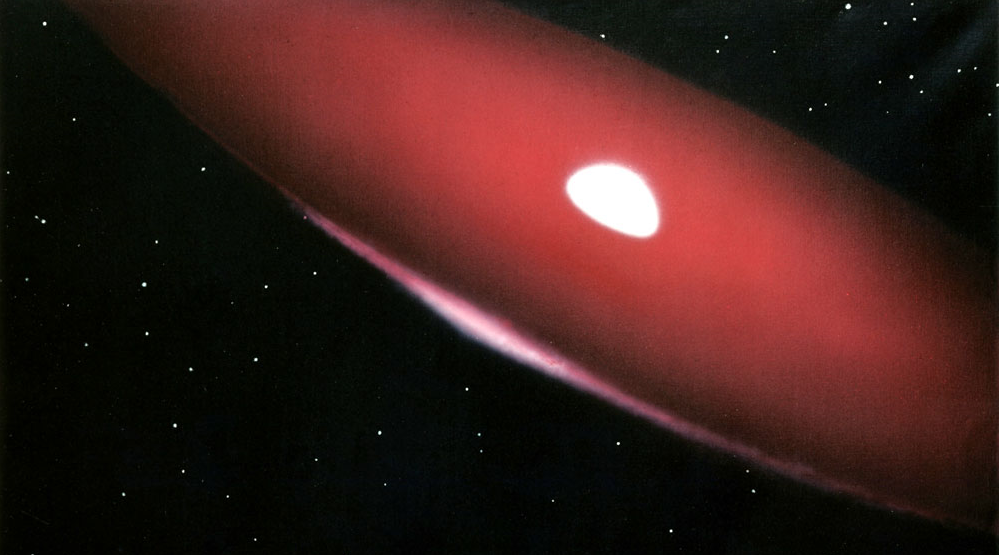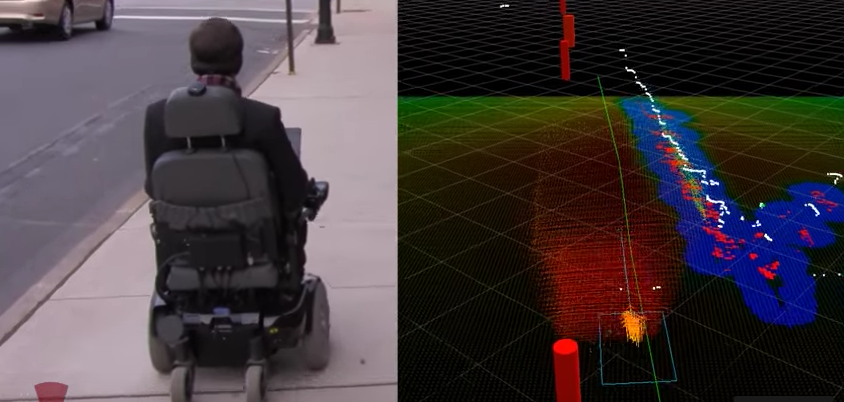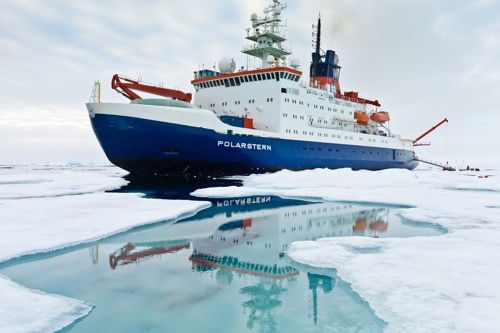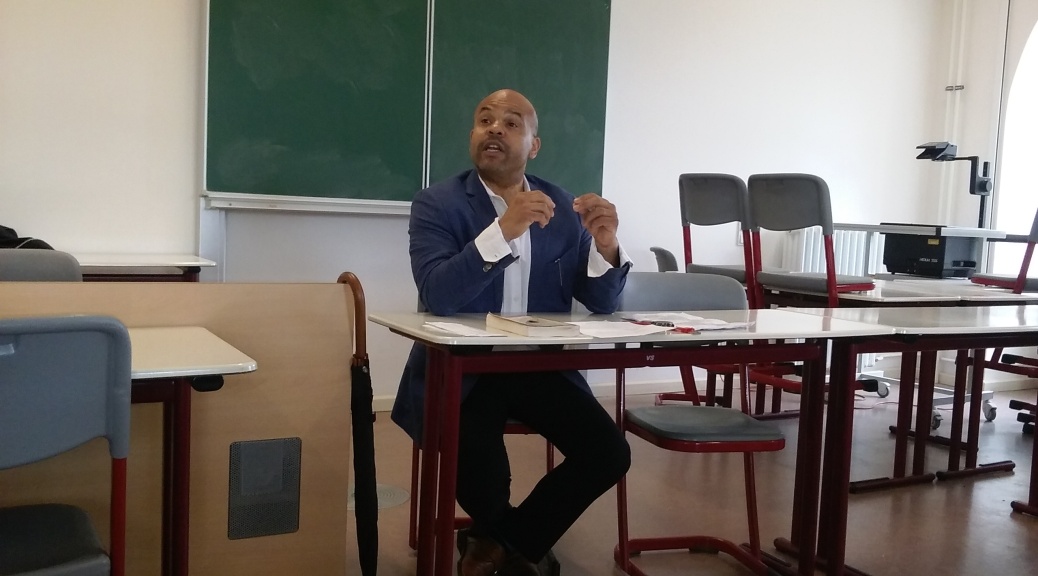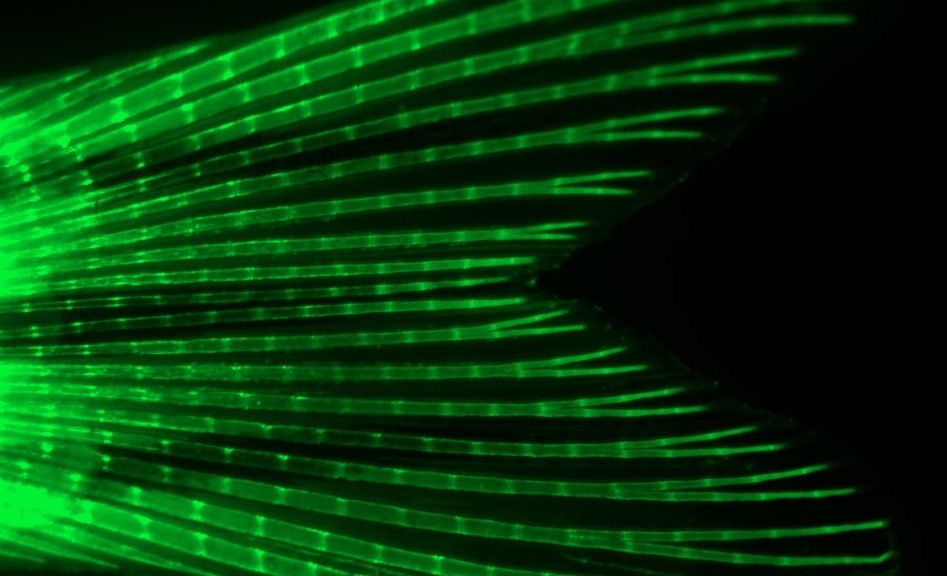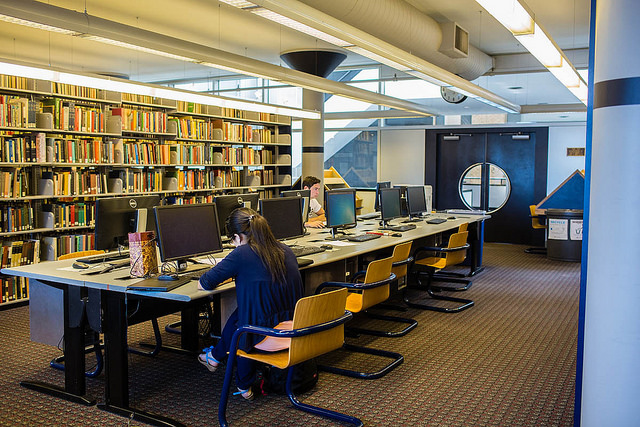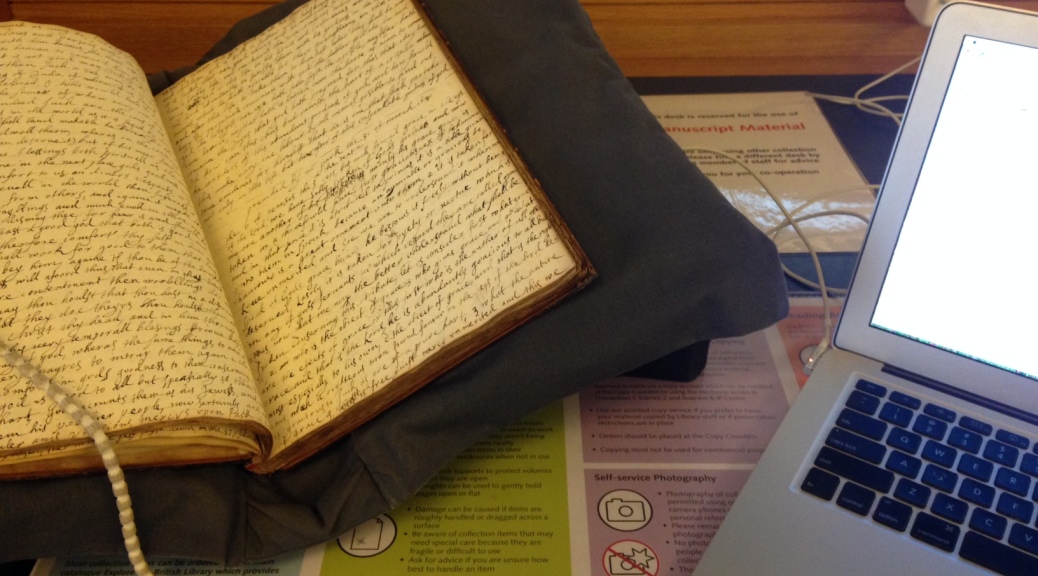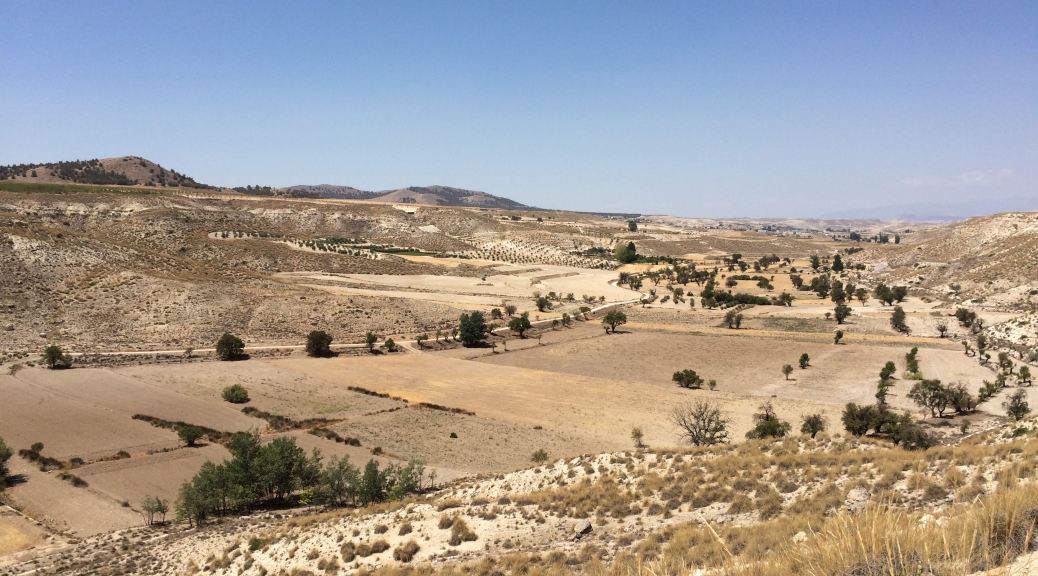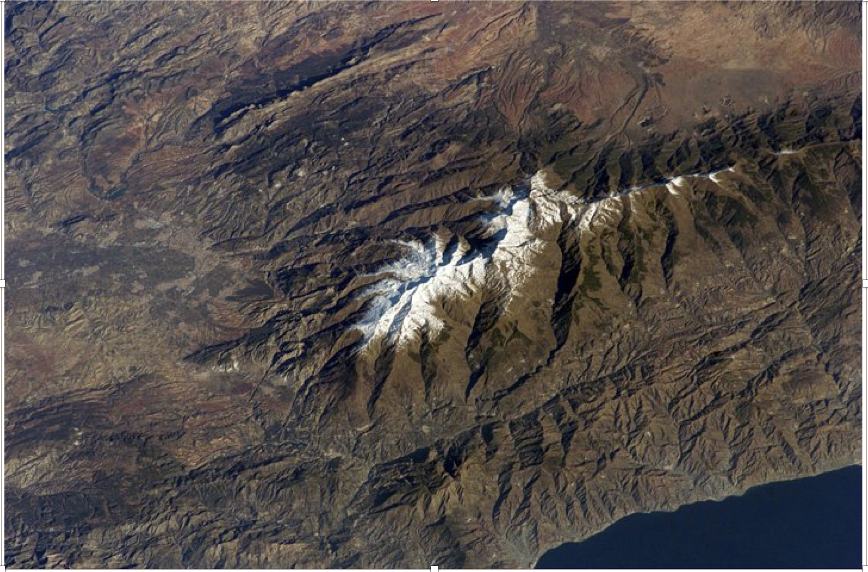All stars are not created equal. When you look out into the night sky, you are seeing all sorts of unique and interesting objects. Some stars are small and cool (at least, compared to our Sun), and live for many billions of years. Others have evolved and inflated to enormous sizes- even over 1,000 times the size of our sun. There is a class of bright, blue stars called “Classical Be stars” that are between about 5 – 20 times more massive than the sun, and spin so quickly that they are nearly torn apart by the resulting centrifugal force. These stars also have disks that grow and shrink, appear and disappear. Classical Be stars are unique in astronomy, because their disks originate from the stars themselves. Material from the surface of the star is flung outward with so much speed (and angular momentum) that it is launched into orbit, and then settles into a disk in an event called an “outburst”. Lehigh physics professor Joshua Pepper and graduate student Jonathan Labadie-Bartz are studying these objects because there is still much that is unknown, especially regarding the physical mechanisms behind outbursts. The header shows an artist’s rendition of a Be star and its disk.
As a Classical Be star experiences changes, whether it be an outburst or a shrinking disk, the amount of emitted light will change too. If you look at these stars every night for many years, and record how their brightness is changing, then you can read these signals and interpret what the star is doing. This is the main idea behind the research. The brightness measurements come from the Kilodegree Extremely Little Telescope (KELT), directed by Prof. Pepper. KELT is a survey that has been monitoring large patches of the night sky every clear night for the last ten years, and is being used to discover new planets orbiting these distant stars. So far, KELT has observed over 4.4 million stars. These show lots of interesting behavior, providing many opportunities to explore new science, including the study of Classical Be stars.
Natural Feature Localization Robotics Technology for Warehouse Environments
John Spletzer is an Associate Professor of Computer Science and Engineering at Lehigh University. Below he details the
The inspiration for this project came during my sabbatical at Love Park Robotics, LLC (LPR) in 2015. LPR is a robotics startup doing work in industrial perception, and the primary project I worked on was a vision-based pallet detection system for use by Automated Guided Vehicles (AGVs). AGVs are autonomous vehicles operating in warehouse environments. Think “robot forklift,” and you have the right idea. To estimate their position and orientation, AGVs typically rely upon 2D LIDAR (laser scanner) based localization systems that track reflector targets surveyed into the warehouse. The approach is very effective, and can provide sub-centimeter levels of accuracy. However, the process of installing the targets is both time consuming and expensive. Furthermore, it needs to be repeated any time the warehouse is reconfigured. Conversations with Tom Panzarella, CEO of LPR, lead us to investigate an alternative approach. Our hypothesis was that recent advances in 3D LIDAR systems would allow us to estimate AGV pose by tracking natural features already existing in the warehouse. This would eliminate the need for retroreflector targets all together. We refer to this technology as AGV-3D. From my NSF CAREER research, my lab had already demonstrated that a smart wheelchair system using a similar approach could reliably navigate in an urban environment without GPS. You can see an early video from the project here:
Continue reading Natural Feature Localization Robotics Technology for Warehouse Environments
Hot Water in the Arctic: Oases for Life Beneath Ice-Covered Oceans
Jill McDermott is an Assistant Professor in the Department of Earth and Environmental Sciences at Lehigh University. Her research is taking her to the high Arctic to explore for new volcanic activity and ecosystems on the seafloor. Follow along live on the cruise blog.
NASA’s mission to the ice-covered ocean of Jupiter’s moon Europa will launch in the 2020s. About a decade from today the first data return may arrive, but in the meantime there is plenty to do on our own planet. This week, I join a rare mission on the German icebreaker Polarstern to do the next best thing – a search for submarine hydrothermal vents in the Arctic Ocean. Our goal is to reveal the chemical signatures that accompany life on the seafloor, and track these signals upward through the ocean water to the overlying ice-water interface, and into the ice itself. The idea is to discover an extreme ecosystem living below the Arctic ice to understand how to design a mission for a future space lander. This well-informed lander will make similar measurements while looking for life on Europa’s icy surface.
At 87°N 61°E in the Arctic, two of Earth’s tectonic plates diverge along an underwater volcanic mountain chain called the Gakkel Ridge, which stretches for 1,100 miles off Greenland towards Siberia. The plate motion here is the slowest in the world, spreading apart only 0.4 inches per year, at a rate 3 times slower than your fingernails grow. Due to this low tectonic activity, it seemed unlikely that the Gakkel would host hydrothermal vents – places where seawater circulating through fractures in the seafloor rock extracts heat derived from volcanic activity, and rises up to the seafloor in scalding plumes of mineral-laden water. These vents deliver chemicals to the seafloor that provide energy and building materials for specialized ecosystems, a process called ‘chemosynthesis.’ In 2003, however, a team of shocked scientists discovered chemical signatures in the water indicating multiple regions of hydrothermal activity along the Gakkel Ridge.
All scientific research requires patient dedication, and this expedition builds on years of risks, set-backs, and successes of many colleagues. The deep ocean is harsh. The freezing waters of the Arctic are even less forgiving than the mid-latitudes, and little is known about the seafloor ecosystems that are living there, undetected for tens of millions of years. In the coming weeks, I may be among the fortunate few to collect the first samples at the seafloor at one of the Gakkel vent sites.
We are aiming for a particular location in the Arctic, the Karasik Massif, an underwater mountain that rises rapidly from 15,400 feet depth to 1,850 feet depth. The Karasik Massif lies along a fault, a break in the seafloor rock that cuts through thin ocean crust into underlying ‘ultramafic’ rocks that formed deeper in Earth’s mantle.
The ultramafic geologic setting makes this site an exciting target for exploration due to the geochemistry that arises when circulating fluids interact with iron-rich rocks at high 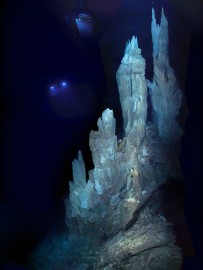 temperatures and pressures. Similar conditions exist at two other known hydrothermal fields in the Atlantic Ocean, Lost City and Rainbow, where vent fluids expelled at the seafloor are rich in dissolved hydrogen gas. The enrichment in hydrogen gas means there is great potential for the chemical, or ‘abiotic’ formation of organic molecules like methane and formic acid – possible precursors to the prebiotic compounds from which life on Earth emerged. There are only a few well-characterized seafloor ultramafic vent sites, however, and every one is different. This expedition is vital to understand the full range of chemical and biological diversity possible around Earth’s chemosynthetic ecosystems.
temperatures and pressures. Similar conditions exist at two other known hydrothermal fields in the Atlantic Ocean, Lost City and Rainbow, where vent fluids expelled at the seafloor are rich in dissolved hydrogen gas. The enrichment in hydrogen gas means there is great potential for the chemical, or ‘abiotic’ formation of organic molecules like methane and formic acid – possible precursors to the prebiotic compounds from which life on Earth emerged. There are only a few well-characterized seafloor ultramafic vent sites, however, and every one is different. This expedition is vital to understand the full range of chemical and biological diversity possible around Earth’s chemosynthetic ecosystems.
One challenge to studying the chemistry of modern vent fluids is that living things now permeate our planet. Organic compounds can also be generated and consumed by life itself, of course, and active microbial communities living in the seafloor around the vents rely on chemical energy from compounds emitted by the vents, such as hydrogen and methane. My goal on this expedition is to collect vent fluids and characterize their geochemistry, including distinguishing abiotic from biotic chemical processes, and how these influence the generation of life-related biogeochemical signatures.
To collect the vent fluids, we will launch the Nereid Under-Ice, a new remotely operated underwater vehicle developed and operated by the Woods Hole Oceanographic Institution . The Nereid UI will first be deployed in free-swimming autonomous mode to make 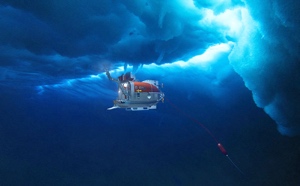 high-resolution seafloor maps and track down the vents by measuring chemical clues, such as particle-rich water and locations where the seawater is relatively rich in hydrogen and methane. Once the exact location of the vent site is known, the Nereid UI will transform and launch again, now tethered by a fiberoptic cable the width of a human hair. I will equip it with titantium syringes that can collect vent fluid samples and maintain seafloor pressures until the samples are back onboard the ship. There my colleagues and I will begin the exciting task of understanding the origin of these fluids, how they sustain life on the Arctic seafloor, and what this means for life detection on other planetary bodies in our solar system and beyond.
high-resolution seafloor maps and track down the vents by measuring chemical clues, such as particle-rich water and locations where the seawater is relatively rich in hydrogen and methane. Once the exact location of the vent site is known, the Nereid UI will transform and launch again, now tethered by a fiberoptic cable the width of a human hair. I will equip it with titantium syringes that can collect vent fluid samples and maintain seafloor pressures until the samples are back onboard the ship. There my colleagues and I will begin the exciting task of understanding the origin of these fluids, how they sustain life on the Arctic seafloor, and what this means for life detection on other planetary bodies in our solar system and beyond.
Research support includes funding from the National Aeoronautics and Space Administration and the Alfred-Wegener Institute.
Image credits:
Research icebreaker Polarstern: Mario Hoppmann, Alfred Wegener Institute
Mosaic of the Lost City Hydrothermal Field: D. Kelley, University of Washington
Nereid Under-Ice rendering: Woods Hole Oceanographic Institution
Tracing James and Du Bois in Berlin
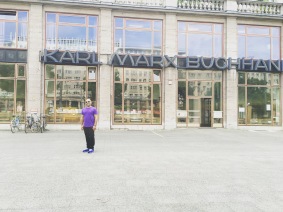 a PhD. In addition to seeking out the archives at Humboldt University (formerly the University of Berlin), I was also asked to present my research to a group of graduate students at the University of Potsdam. At the invitation of Professor Logi Gunnarsson, an expert on James’s work, I was able to share the influence of James’s teaching on the young Du Bois, as we navigated James’s 1890 text “The Hidden Self.” The dialogue and feedback was wonderful. And I made an invaluable friend and colleague in Logi. We often forget how influential German intellectuals were in shaping the American academy. James and Du Bois were no different. It was truly exciting to be in this formerly divided city, thinking about race, the subconscious mind, and double consciousness, all with young men and women eager to complete their own graduate education and share their perspectives on a topic that clearly crosses the Atlantic in terms of importance. I look forward to returning to Cambridge to learn more about James and Du Bois at Harvard – but also one day to Berlin – and to Potsdam – to revisit the same field of study that so shaped these two critical thinkers in American race and psychology.
a PhD. In addition to seeking out the archives at Humboldt University (formerly the University of Berlin), I was also asked to present my research to a group of graduate students at the University of Potsdam. At the invitation of Professor Logi Gunnarsson, an expert on James’s work, I was able to share the influence of James’s teaching on the young Du Bois, as we navigated James’s 1890 text “The Hidden Self.” The dialogue and feedback was wonderful. And I made an invaluable friend and colleague in Logi. We often forget how influential German intellectuals were in shaping the American academy. James and Du Bois were no different. It was truly exciting to be in this formerly divided city, thinking about race, the subconscious mind, and double consciousness, all with young men and women eager to complete their own graduate education and share their perspectives on a topic that clearly crosses the Atlantic in terms of importance. I look forward to returning to Cambridge to learn more about James and Du Bois at Harvard – but also one day to Berlin – and to Potsdam – to revisit the same field of study that so shaped these two critical thinkers in American race and psychology.Developing a vertebrate model system for Roberts Syndrome
Kathy Iovine, an Associate Professor in the Department of Biological Sciences, and Bob Skibbens, a Professor in the Department of Biological Sciences, introduce you to their research on Roberts Syndrome. This work is funded in part by a Faculty Innovation Grant.
Greetings! The purpose of this post is to introduce you to a Faculty Innovation Grant titled Developing a vertebrate model system for Roberts Syndrome. Roberts Syndrome (RBS) is a severe form of birth defects that significantly impacts bone growth (as well as cognition and organ development). In RBS patients, the long bones of the limbs are severely reduced, along with craniofacial abnormalities (cleft palatte, small head size, etc). The syndrome arises due to mutations in a gene named ESCO2, but the basis of the ESCO2 defect remains unknown. An important step forward will be to develop a model system for RBS so that we can ultimately devise clinical therapies.
As part of a collaboration between the Skibbens and Iovine lab groups, we are establishing the zebrafish fin as an RBS model system. Zebrafish fins are an excellent system since amputation results in complete regrowth, and we have the technology to turn down gene function during regrowth (“regeneration”). We found that loss of Esco2 protein causes skeletal defects in the zebrafish regenerating fin (Figure 1 shows a normal fin skeleton). With the ability to assay for Esco2 function in regenerating fins, we are pursuing a new model that Esco2 may cause skeletal defects by regulating the expression of genes. Evidence obtained through this collaboration suggests that Esco2 regulates cs43 – a gene that encodes a protein previously shown by the Iovine lab to impact bone growth (check out Iovine et al., 2005, Developmental Biology) and implicated in a developmental abnormality referred to as Oculodentodigital dysplasia. This research has been published in the journal Developmental Dynamics (Banerji et al., 2016 Developmental Dynamics)!
More recent efforts have been to provide mechanistic insights into how Esco2 regulates the expression of the skeletal gene cx43. The most direct way to show this is to demonstrate that the Esco2 protein, or a protein regulated by the function of Esco2 (i.e. Smc3), associates with the cx43 gene. Esco2 regulates the ability of Smc3 (and others) to associate with DNA. We are now testing if Smc3 physically binds to the DNA surrounging the cx43 gene. Raj Banerji has made important progress showing that she can isolate chromatin (i.e. genomic DNA plus all of the associated proteins) from a fin cell line, AB9. She can also isolate only the parts of the chromatin that are associated with Smc3. She is now testing if cx43 DNA is among the isolated Smc3-bound chromatin.
Keywords: skeletal disease, zebrafish, regeneration, gene expression
Resources for proposal writing
Proposal development is a regular facet of faculty life, but it is one that isn’t necessarily included in graduate training. Fortunately there are plenty of resources available to help. Below is a round up of some of the best online guides.
- The Foundation Center has a short online course laying out the components of a typical grant application and provides tips for writer.
- For NEH applicants, OSU posted slides and a video of a workshop with Claudia Kinkela, NEH program officer.
- The Social Science Research Council website includes a free publication On the Art of Writing Proposals.
- Applicants should also begin by looking for specific advice from the foundation or federal agency to which they are applying.
All of these resources share some of the same specific advice: write for the educated generalist. Good luck!
The Research Lifecycle: Seeing it Through and Starting Anew
Jenna Lay is Associate Professor and Director of Graduate Studies in the English Department of Lehigh University.
The academic lifecycle is an unusual one. Years unfold in months-long stretches of time: fall and spring semesters devoted to teaching and running academic programs; summer, as Nicholas Sawicki suggests in his post, offering time for larger projects, writing, and travel—like the archival work Elizabeth Dolan describes. The rhythm of an academic career offers similar ebbs and flows, as the boisterous conversation of graduate coursework transforms into the solitary discipline of a dissertation, which, in turn, enables the intellectual growth that will foster new forms of engagement in the classroom and in a broad range of communities.
As a pre-tenure faculty member at Lehigh, I spent the last six years building on that foundation: transforming the knowledge and skills gained through graduate study into the research, teaching, and service that structure academic days, months, and years. I can now hold the most material of these transformations in my hands: my first book, Beyond the Cloister: Catholic Englishwomen and Early Modern Literary Culture, was published this month by the University of Pennsylvania Press.
With my book’s publication, I’ve been thinking about the research lifecycle, and especially about how scholars transition from one project to the next. Watching my words evolve from malleable files on my computer to the relative fixity of a printed book, I’ve become increasingly convinced that a research project is never truly complete: that the questions answered will inevitably spark new ideas and areas for exploration. And yet this is still a summer of endings and beginnings, of one project completed and another just developing. In this blog post, I’ll say a bit about what a transitional period like this entails: what did my summers look like when I was working on Beyond the Cloister? How does this summer differ?
Continue reading The Research Lifecycle: Seeing it Through and Starting Anew
A new project: dating the chronology of European migration
David Anastasio is a geologist in the Department of Earth and Environmental Studies at Lehigh University. He is currently blogging from his research site in Spain. Catch up here!
A persistent debate surrounds the chronology of the colonization of Europe. The Guadix-Baza Basin in southern Spain is the repository of 2,000 m of ancient sedimentary strata that record the depositional, climatic, ecological, and tectonic events along the European-African plate boundary at a time of hominin migration out of Africa. The basin was also the
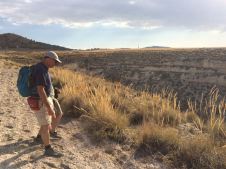
lake beds where a 1.4Ma hominid tooth (pictured) was discovered site of the last connection between the Atlantic Ocean and Mediterranean Sea before the modern connection at Gibraltar. Retreat of the seaway resulted in the largest lake in Europe, which evolved from grassland environments to a savannah landscape with abundant game. Previous studies have established the paleoenviromental evolution of the archeological sites but without precise chronologies it is not possible to reconcile arguments as to whether evolving climactic or geographic barriers in the Betic Cordillera were instrumental in facilitating the peopling of Europe or whether hominins simply “followed the herd”.
Josep Parés (Spanish Research Center for Human Evolution) and I are using the record of periodic changes in Earth’s orbital parameters (Milankovitch cycles) that are encoded in nearly all sedimentary rocks to refine chronologies. Orbital cycles are known to result in natural long-term variations in Earth’s climate. When tuned to absolute time control, cyclostratigraphy constitutes a metronome with a precision, accuracy, and continuity that out performs other dating methods. Our sampling strategy will allow the basin’s paleoarcheology sites to be more precisely dated and correlated so that coordinated paleogeographic and paleoenvironmental parameters can be established.
Act Like You Know: Towards a Digital Record of Hip Hop Theatre
KASHI JOHNSON is an actress, director and Associate Professor in the Department of Theatre; where she teaches courses in performance, Hip Hop theatre and directs plays. Dedicated to cultivating voices from the Hip Hop generation, Professor Johnson has been nationally recognized for her research in Hip Hop theatre pedagogy and given talks about her groundbreaking Hip Hop theater course ‘Act Like You Know’, for national speaking platforms like TEDx and BlackademicsTV.
They say if you want to tell your story, the best way to do it is to tell it yourself. Over the past year, I’ve done exactly that by gathering and organizing over 10 years worth of student devised Hip Hop theatre video performances, newspaper articles, and images that document my work in Hip Hop theatre; by collaborating with a very talented, very patient web designer, on the re-design of my YouTube channel, creation of a digital archive and design of my professional website www.kashijohnson.com.
The YouTube channel, Kashi Johnson, now features over 200 video clips of Lehigh student performances in Hip Hop theatre. The videos are organized into chronological playlists that can be easily accessed by anyone. Since the channel update, the view counts on my videos has more than doubled with 11,600 views and counting. I am pleasantly surprised at how well the channel is doing and look forward to continuing to build this archive with such a solid foundation in place.
I also worked with the same web designer to create my professional website www.kashijohnson.com . This website is my digital portfolio and it showcases my research  and teaching as a theatre professor, actress, director, playwright, producer and public figure. My website has a lot of moving parts. It tells my story through images, videos and digital records of interviews, articles and performances. Since the website’s launch in May 2016, I have received a steady stream of positive feed back about the site and made several professional connections with fellow scholars interested in my work. I am encouraged and excited because this site is generating the right type of attention to my work and has empowered me to network with confidence and ease.
and teaching as a theatre professor, actress, director, playwright, producer and public figure. My website has a lot of moving parts. It tells my story through images, videos and digital records of interviews, articles and performances. Since the website’s launch in May 2016, I have received a steady stream of positive feed back about the site and made several professional connections with fellow scholars interested in my work. I am encouraged and excited because this site is generating the right type of attention to my work and has empowered me to network with confidence and ease.
This link is a YouTube video that was designed for my website as a digital calling card. In the words and voice of one of my students, Karen Valerio ’17, it tells my story: who I am, what I’ve done and what I’m about to do next.
Enjoy!
Curating Friedrich Feigl: The Eye Sees the World
Nicholas Sawicki is an Associate Professor of Art History in the Department of Art, Architecture and Design at Lehigh University. He has been working this summer on an exhibition in the Czech Republic.
For research, the summer months have a different pace to them than the rest of the year. The campus becomes quieter, time frees up, and it becomes possible to work on larger projects that can’t be fit into the usual academic calendar. This is the time of year when I’m either buried in writing or packing my bags for travel, and this summer has been no different. I’ve been spending most of my days putting the final touches on a museum exhibition that I’m curating in the Czech Republic, which I have just finished installing.
The exhibition focuses on the artist Friedrich Feigl (1884-1965). He was a prominent modernist painter and printmaker from Prague, and spent part of his career in Berlin and London. I have been publishing on Feigl for some time, and a few years ago I was approached with the idea of curating an exhibition of his work. The invitation came from the Gallery of Fine Arts in Cheb, a Czech state museum in what used to be known as the Sudetenland, the part of Czechoslovakia that Nazi Germany annexed in 1938.
Today Cheb is a city of around 30,000, with a historic town square of late gothic, renaissance, and baroque buildings. The Gallery of Fine Arts is housed in a large palace built in the early 18th century as the city’s town hall. It has an extensive museum collection, and has recently started organizing exhibitions of German and Jewish artists once active in Czechoslovakia, whose memory and legacy was mostly erased by World War II, the Holocaust, and postwar communism. Feigl was Jewish and spent much of his life in the country, until the Nazis advanced on Prague in spring 1939, forcing him and his wife to flee for the west. They lost much of their family to the Holocaust, and escaped for London, where Feigl joined a large community of exiled Central European artists, writers, and cultural figures.
The planning of a museum exhibition is generally a long process, with countless decisions to be made along the way: selecting which works to include and researching their history, arranging loans and transport of works from different museums, creating a plan for how these objects will be installed in the gallery space, and writing the narrative text and captions that audiences will use to navigate the exhibition. The two years I had to work on the project were a short window of time, all the more because I was concurrently editing a new monograph on the artist, to be published with the exhibition. To take me through the final stretches of my work, I had the support of a Faculty Research Grant, which helped me bring the project to conclusion.
I had started planning for the exhibition early on with some quick sketches, initially thinking about what selection of works would best tell the story of Feigl’s life and art, and how this narrative might unfold in the five rooms that make up the gallery space. I also decided on a title for the show, Friedrich Feigl: The Eye Sees the World. It had to work equally well in Czech and German, as these two languages are also in use in the textual materials accompanying the exhibition. The titling takes its cue from what I have come to understand as a discerning feature of Feigl’s art—the way his innovative modernist works always retain a connection to the visible world, an unwavering interest and curiosity for the observable subjects of his own physical and social surroundings.

As the planning process for the exhibition moved forward, I worked closely with the director of the Gallery of Fine Arts, Marcel Fišer, to determine which of the works we could actually borrow from museum and private lenders, scattered across the Czech Republic, England, Germany, and the United States. I then used design software to produce more detailed iterations of the installation plan. The exhibition features more than 70 works, and for a show this large in scale, designing the installation is like putting together a puzzle without fully knowing what the outcome will look like until the very end. There are multiple moving parts, and it’s a process that benefits from feedback. While working on the show, I dropped in to talk with colleagues Mark Wonsidler and Jeffrey Ludwig at the Lehigh University Art Galleries to get their input on the exhibition design, which I then further refined and sent on to Cheb.
Continue reading Curating Friedrich Feigl: The Eye Sees the World
Explaining the work
David Anastasio is a geologist in the Department of Earth and Environmental Studies at Lehigh University. He is currently blogging from his research site in Spain. Catch up here!
The Earth’s surface is a dynamic interface that evolves through the influence of tectonic and climatic drivers. Understanding the feedbacks between solid-Earth deformation, surface processes and landscape evolution requires a process-based approach that integrates detailed field observations and temporal determinations across many spatial scales. Changes in tectonic forcing or processes of surface erosion and deposition can alter the near-surface stress field and influence fault evolution, uplift, subsidence patterns, and
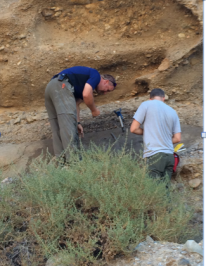
topographic relief. East of Granada, Spain, Earth and Environmental Sciences Professor Claudio Berti, EES graduate student James Carrigan and I are testing the various models available for the evolution of the Gibraltar Arc and Alboran Sea against the predictions each makes for the Betic Cordillera with field observations and chronologic data along the main drainages of the mountain belt and marine terraces exposed along the Mediterranean coast.
The mountains resulted from the collision between the African and Eurasian tectonic plates over the last 10 million years. The dating methods allow us to measure rates of surface change to add temporal evolution to our snapshot of the current state of the landscape and allow us to reconstruct the tectonic processes that have led to the present state and to test the sensitivity of topography to record processes within the solid Earth.
A geologist in the field
David Anastasio is a geologist in the Department of Earth and Environmental Studies at Lehigh University
In the scorching summer heat there are very many reasons to find your way to southern Spain. Most of the people I know would say that the crystal clear water of the ocean, many millennia of alternating cultures, and the exquisite food would be at the top of the list…but I am a geologist…and I’ve come to this gorgeous part of the world to study how mountain start, evolve, and grow. From a small wrinkle at the bottom of the ocean, to the majestic peaks of Sierra Nevada, standing more than three kilometers tall above the Mediterranean coast.
How and why do I do this? Well… this is the story I will post to you over the next several days. It is now time for me to enjoy the fresh seafood after a long day in the field! My colleague, Claudio Berti and my student James Carrigan are waiting for me. Talk to you soon!
